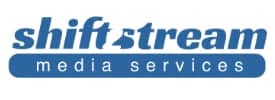- About
- Members
- Sponsors
- Subcommittees
- About Our Subcommittees
- Technology Group 3
- Implementation Team 1 – Advanced Emergency Information
- Implementation Team 2 – India
- Implementation Team 3 – ATSC 3.0 Conformance
- Implementation Team 4 – Brazil
- Implementation Team 5 – Tower Network
- Implementation Team 7 – Caribbean
- Implementation Team 8 – Automotive
- Planning Team 4 – Future Broadcast Ecosystem Technologies
- Planning Team 5 – Automotive Applications
- Planning Team 6 – Global Recognition of ATSC 3.0
- Planning Team 9 – Sustainability
- Technical Documents
- News
- Events
- Spotlight ATSC 3.0
- Contact Us
- Member Login
- Member Meetings
- Advanced Search
Search Site
Member Links
- About
- Members
- Sponsors
- Subcommittees
- About Our Subcommittees
- Technology Group 3
- Implementation Team 1 – Advanced Emergency Information
- Implementation Team 2 – India
- Implementation Team 3 – ATSC 3.0 Conformance
- Implementation Team 4 – Brazil
- Implementation Team 5 – Tower Network
- Implementation Team 7 – Caribbean
- Implementation Team 8 – Automotive
- Planning Team 4 – Future Broadcast Ecosystem Technologies
- Planning Team 5 – Automotive Applications
- Planning Team 6 – Global Recognition of ATSC 3.0
- Planning Team 9 – Sustainability
- Technical Documents
- News
- Events
- Spotlight ATSC 3.0
- Contact Us
- Member Login
- Member Meetings
- Advanced Search
CHAT ROOM: Spectrum of Insights
Posted on January 16, 2019 in ATSC News
In the Chat Room this month, we sat down with John Hane, President of the Spectrum Consortium, aka “Spectrum Co.” His self-described mission for Spectrum Co is to “promote spectrum utilization, innovation and monetization by advancing the adoption of the ATSC 3.0 transmission standard across the broadcast industry.” That’s a mouthful. So we asked him to elaborate and provide his expert insights on the evolving broadcast-broadband landscape.
THE STANDARD: Can you please fill us in about Spectrum Co’s mission and business model?
HANE: Simply put, our mission is to exploit the capabilities of ATSC 3.0 to build new businesses and revenue for Spectrum Co consortium members. Each member station reserves a portion of its spectrum for us to aggregate and take to the market for new services.
Two major barriers have prevented broadcasters from fully realizing the intrinsic value of their terrific spectrum assets. The first is an outdated technology. Sure, ATSC 1.0 ushered in HDTV and multicasting, but it’s based on 1990s technology. Now, ATSC 3.0 is the clear path to scaling that barrier. The second is the ownership rules. Even the biggest broadcasters lack the geographic footprint and depth of spectrum to launch nationwide services. And the fact is, the market for wireless services demands national scale and significant depth. Consider that AT&T alone has more spectrum across the country than does the entire broadcasting industry combined. Spectrum Co is a vehicle to unlock the full value of our spectrum assets by working together to create new businesses.
We can’t realize this potential until we launch ATSC 3.0, so Job 1 is to facilitate an efficient rollout. We’ve identified a significant number of markets for near-term rollout, and we’re now inviting other broadcasters in those markets to join us. Stations don’t have to join Spectrum Co to transition with us, but we hope they will.
THE STANDARD: We understand that SFNs (single frequency networks) are part of Spectrum Co.’s vision for ATSC 3.0. John, what do you see as advantages that SFNs bring to broadcasting?
HANE: I see three major benefits among a slew of advantages. First, SFNs can greatly enhance the core OTA (over-the-air) business by improving coverage areas, indoor and mobile reception, and by allowing targeting. Second, by improving signal levels, they provide more capacity for video and non-video services alike because more power means less coding for the same level of service. And at the end of the day, capacity is our inventory, whether we use it to improve the core OTA business or to expand into new businesses. Third, it allows us to expand service beyond our traditional service areas and provide useful services in what now are white spaces. Those white spaces are vestiges of an outdated architecture that SFNs let us move beyond. Broadcasters rightfully fret about lost (unmeasured) viewing. The opportunities missed along major traffic corridors and in populated areas beyond tall tower coverage areas are enormous by comparison – that’s money left on the table every single day.
THE STANDARD: What’s up with the new 5G mobile standard? From a broadcasting perspective, how do you see ATSC 3.0 and 5G co-existing in the future?
HANE: 5G will be a huge demand driver for low-band (including bands in which terrestrial broadcasters operate) data services, especially ATSC 3.0. The carriers will eventually upgrade their own low-band spectrum to 5G, but that will bring only incremental capacity gains. In the meantime, they’ll light up tens of thousands of 5G picocells operating in the millimeter wave bands above 20 GHz. Each will provide immense capacity – but only within 100 to 200 meters of the site. This will create a capacity asymmetry. Users moving in and out of those picocells watching live video, for example, will severely tax the carriers’ mid-band and low-band sites because the users will expect continuous data streaming regardless of whether they’re in range of a picocell. It will be more important than ever to keep certain high priority and high bandwidth traffic on low-band spectrum. That’s the market into which Spectrum Co will be launching low-band data broadcasting services. As you can imagine, I’m really enthusiastic about the opportunities 5G creates for broadcasters.
John Hane was named President of the Spectrum Co a year ago. His experience over the years includes development, executive and legal roles at NBC, New World Communications, Lockheed Martin, and Pegasus Communications. He founded Highcast, an early digital ad insertion technology company, two decades ago. Most recently, before joining Spectrum Co, he was a partner in Pillsbury’s media and telecommunications group.
Posted in ATSC News
News Categories
News Archives
Subscribe
Subscribe to The Standard, our monthly newsletter. Learn More
Join ATSC
ATSC is a membership organization with both voting and observer categories. Voting members include corporations, nonprofit organizations, and government entities, and they participate actively in the work of ATSC. Observers are individuals or entities not eligible to be a voting member.
Subscribe to our Newsletter
Subscribe to The Standard, our monthly newsletter, to stay up-to-date with ATSC news and events around the world.
Site Links
Contact Us
Advanced Television Systems Committee, Inc.
1300 I Street NW, Suite 400E
Washington, DC 20005
Do you have questions about ATSC?
About ATSC
The Advanced Television Systems Committee, Inc., is an international, non-profit organization developing voluntary standards and recommended practices for digital terrestrial broadcasting. ATSC member organizations represent the broadcast, broadcast equipment, motion picture, consumer electronics, computer, cable, satellite, and semiconductor industries. ATSC also develops digital terrestrial broadcasting implementation strategies and supports educational activities on ATSC standards.
© 2024 ATSC









































